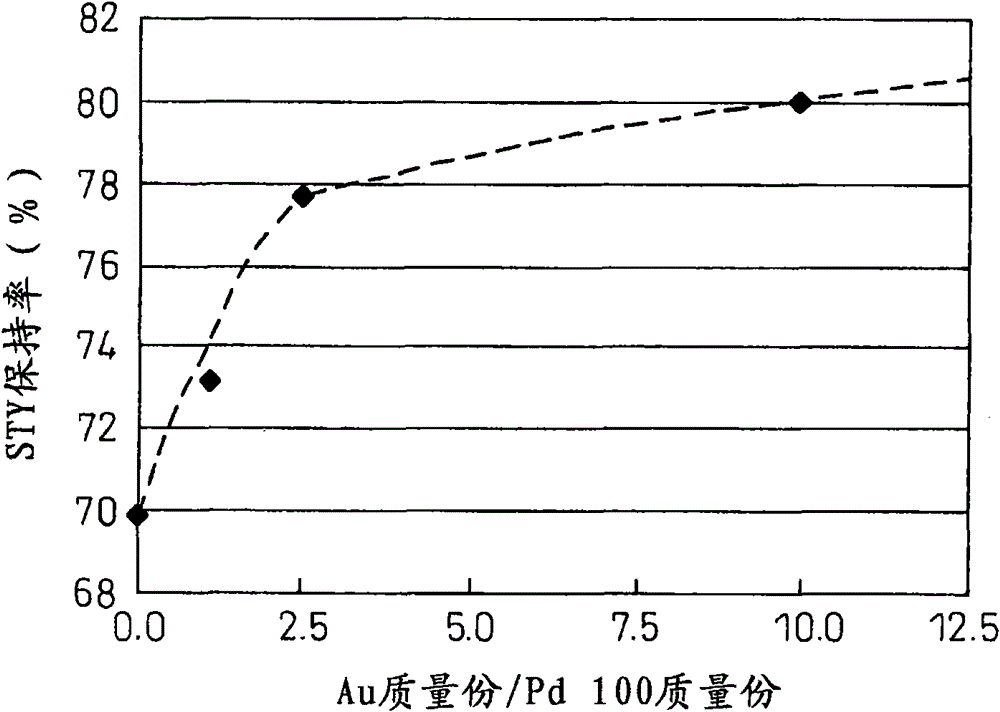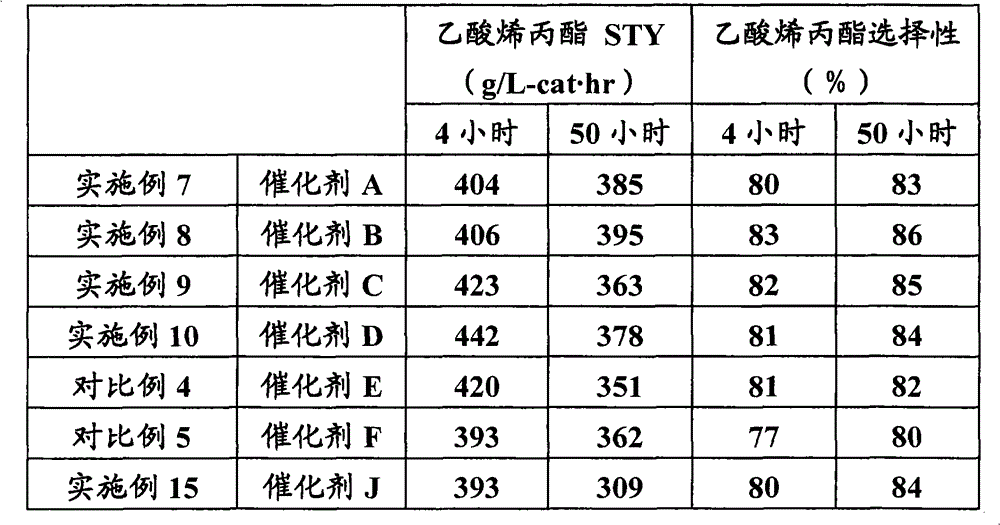Process for production of allyl acetate production catalyst
A technology for the production of allyl acetate, which is applied in the direction of catalyst activation/preparation, carboxylate preparation, chemical instruments and methods, etc., can solve the problems of catalyst performance degradation, etc., and achieve small catalyst activity reduction, effective production, and improved selection sexual effect
- Summary
- Abstract
- Description
- Claims
- Application Information
AI Technical Summary
Problems solved by technology
Method used
Image
Examples
Embodiment 1
[0100] Embodiment 1: the manufacture of catalyst A
[0101] Using a spherical silica carrier (ball diameter: 5 mm, specific surface area: 155 m2 / g, water absorption rate: 0.85 g / g carrier, HSV-I produced by Shanghai Kaigen, hereinafter referred to as "silica carrier"), Catalysts were prepared by the following procedure.
[0102] Step 1: 30.3 grams of sodium chloropalladate aqueous solution prepared to 19.79 mass % palladium concentration and 6.13 grams of chloroauric acid aqueous solution prepared to 10 mass % gold concentration were mixed, and then the volume of the mixture was adjusted to 382 milliliters with pure water, To prepare solution A-1. 1 liter of silica carrier (bulk density specific gravity: 473 g / l, water absorption: 402 g / l) was added thereto to impregnate the A-1 solution until completely absorbed.
[0103] Step 2: Pure water was added to 35.6 g of sodium silicate nonahydrate for dissolution, and the volume was adjusted to 803 ml to prepare solution A-2. The...
Embodiment 2
[0106] Embodiment 2: the manufacture of catalyst B
[0107] Catalyst B was produced by repeating the procedure of Example 1, except that the amount of copper acetate monohydrate was changed from 2.5 grams to 7.5 grams.
Embodiment 3
[0108] Embodiment 3: the manufacture of catalyst C
[0109] Catalyst C was prepared by repeating the procedure of Example 1, except that 2.5 grams of copper acetate monohydrate was replaced by 3.0 grams of copper nitrate trihydrate.
PUM
| Property | Measurement | Unit |
|---|---|---|
| specific surface area | aaaaa | aaaaa |
| pore size | aaaaa | aaaaa |
| particle diameter | aaaaa | aaaaa |
Abstract
Description
Claims
Application Information
 Login to View More
Login to View More - R&D
- Intellectual Property
- Life Sciences
- Materials
- Tech Scout
- Unparalleled Data Quality
- Higher Quality Content
- 60% Fewer Hallucinations
Browse by: Latest US Patents, China's latest patents, Technical Efficacy Thesaurus, Application Domain, Technology Topic, Popular Technical Reports.
© 2025 PatSnap. All rights reserved.Legal|Privacy policy|Modern Slavery Act Transparency Statement|Sitemap|About US| Contact US: help@patsnap.com



